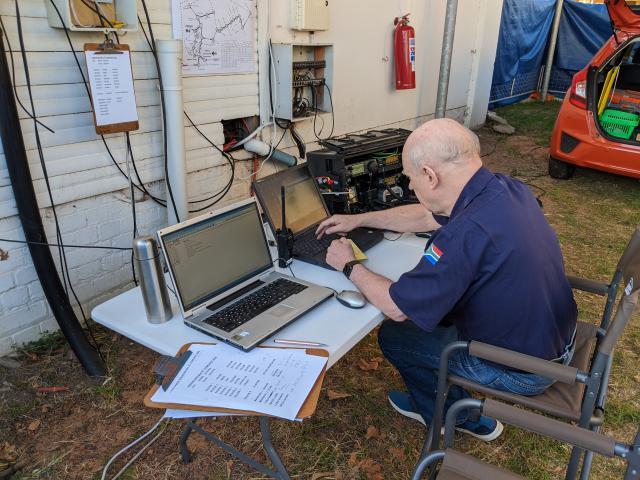It was my first venture as a volunteer radio ham to work with Hamnet WC. Hamnet itself has done many such events over the years for many of the major public sporting events including cycling, road running and car rallies. Hamnet is comprised of dedicated licensed radio amateurs who volunteer their time to assist the various emergency services with extending and coordinating their communications especially into rural and more hard to reach areas where emergency services do not have the use of high site repeaters or mobile repeaters / digipeaters that radio hams can deploy in the field. Our APRS system is designed to operate completely independently of the Internet (for wilderness operations) so although some of it can be seen on the global APRS map, we are not using that map for field operations, and our map also translates the radio callsigns into the designations we are using for the operation such as AMB1, R1, M1 for ambulances, rovers and marshals.
For this event we had two main focus areas:
1. Making use of the APRS system requires the use of a licensed ham radio frequency (144.800MHz) where Hamnet supplied APRS tracking devices to ambulances, marshals, front/back markers and to Rover vehicles so that we could monitor in real-time where all the vehicles were as well as the front and back of both races. Because of the hilly terrain we also deployed one mobile digipeater at a farm to cover the APRS signal for some normally blind areas. We could provide this monitoring on a map to Metro Emergency Medical Services who was located alongside us at the Joint Operations Control (JOC). Metro EMS used this to deploy their ambulances to where they were needed.
2. We also provided 7 of our private vehicles with our own radios and trackers to act as Rovers moving up and down different sections of the race to call in for the necessary assistance from the JOC when required. The vehicles were able to use our nearest high-site repeater for comms but we also had a simplex channel ready for use for relaying between vehicles if one of them could not use the repeater.
The planning started a few weeks back with Dave Reece our Hamnet Information Officer attending the pre-briefings with the organisers and then doing all his ops planning which is distributed to the volunteers who met during last week to finalise all the finer details. The day itself started at 04:30 already with setting up all the equipment and getting trackers installed. My chief role was to record the radio log of events at the JOC which kept me full time busy as the longest break between transmissions was about 2 to 3 minutes, and we only started packing up by 13:30 when the temperature was hitting 32 degrees Celsius.
Luckily there were no serious incidents and it was mostly broken bicycles and dehydration cases. It is an event that allows radio amateurs to exercise their coordination with other emergency services and also to practice their own radio skills.
Pictured below is Dave Reece ZS1DFR busy on the APRS computer with the mapping. To his left is the radio log computer, and on his right is the Go-Box with the two main radios at the top (for repeaters) and one below it for receiving the APRS signals. A Go-Box is a box ready to be picked up as-is and deployed in the field.
Although Hamnet operates much behind the scenes it fulfils a vital communication link function due to its members not only having access to a variety of radio equipment and frequencies, but you’ll see a tremendous amount of skill regarding making a plan to get things to work technically – experimentation is second nature to many radio hams. Hamnet also prepares itself for work without cellphone or Internet communications during disasters (like their counterparts all around the world). For reason, it has very close ties with Provincial Disaster Management and in fact usually uses their venue for monthly meetings.
“When everything else fails, amateur radio will still be there”
#hamnet #amateurradio #hamradio

